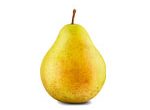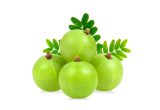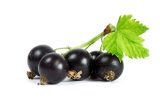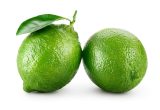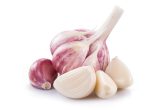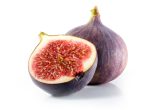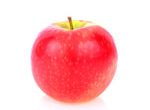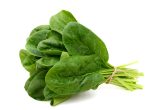Cabbage (red)

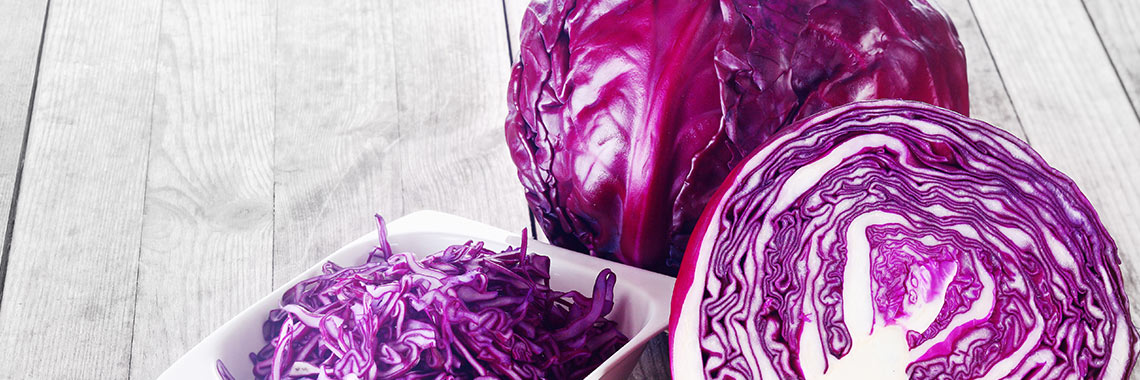
Description
- Red cabbage (Brassica oleracea var. capitata) belongs to the Brassicaceae (cruciferous) family.
- It is an herbaceous plant native to southern and western Europe (Carvalho, 2011).
PHYSICAL AND ORGANOLEPTIC CHARACTERISTICS
- Cabbage can be red, green or white, all three have the same scientific name (Brassica oleracea var. capitata).
- The accumulation of anthocyanin pigments gives cabbage its red colour (Wu, 2017). It reportedly contains 29 different ones with a majority of cyanide glycosides (Fenger, 2019; Strauch, 2019).
- To obtain this red colour, the anthocyanins must be acylated. Coumaric acid, sinapic acid and caffeic acid, phenolic acids present in red cabbage, are responsible for this acylation. These biologically active compounds are beneficial for the prevention of certain diseases (Wu, 2017; Dal, 2018).
- Among these anthocyanins, there are also volatile compounds such as glucosinolates and its degradation products: isothiocyanates, nitriles, sulfides and aldehydes. These compounds impart a bitter and sometimes unpleasant aroma to red cabbage (Müller-Maatsch, 2019).
COMPOSITION CHARACTERISTICS (excluding macronutrients, vitamins and minerals)
- Red cabbage contains anthocyanins which exhibit antioxidant, antimicrobial, antimutagenic and anti-inflammatory properties. These activities are involved in the prevention and treatment of many chronic diseases, such as metabolic disorders, cancer, eye diseases and cardiovascular diseases (Lee, 2017; Wu, 2017; Dal, 2018).
- Consumption of foods containing anthocyanins is thought to reduce body weight and insulin resistance, leading to restoration of glucose tolerance in obese subjects. These compounds may regulate inflammation and chronic diseases associated with obesity (Lee, 2017).
- Red cabbage also contains phenolic acids, including coumaric acid, sinapic acid and caffeic acid. They are beneficial for the prevention of certain diseases (Wu, 2017; Dal, 2018).
- Cooking methods for red cabbage, such as steaming, microwaving, boiling, or pan-frying, seem to result in a fairly significant loss of nutrients. The best way to retain all the nutrients is to eat it raw (Xu, 2014).
RAW
The following values are approximate and depend on variety, season, ripeness, cultivation conditions, etc.
Raw red cabbage is low in energy* as it provides an average of 30 calories (kcal) per 100 g, i.e. 126 kJ. One red cabbage weighs on average 1.50 kg.
COMPOSITION TABLES
For each nutrient, the tables provide information on the content, minimum and maximum values and the percentage of the Dietary Reference Values (DRVs) per 100 g net of raw red cabbage.
*Regulation (EC) No 1924/2006 of the European Parliament and of the Council of 20 December 2006 on nutrition and health claims made on foods.
MACRONUTRIENTS
| Constituent (g) | Average content |
Min-Max per 100g |
DRV% |
|---|---|---|---|
| Water | 90,70 | 87,40 - 93,80 | - |
| Fibers | 2,80 | 1,70 - NC | - |
| Carbohydrates | 4,33 | 4,32 - 4,50 | 1,67 |
| Sugars | 3,90 | 3,15 - NC | 4,33 |
| Lipids | < 0,50 | 0,02 - NC | - |
| Saturated fat | < 0,01 | NC - 0,039 | - |
| Protein | 1,13 | 0,20 - 1,88 | 2,26 |
| Constituent (g) | Amount | Min-Max | DRV% |
|---|---|---|---|
| Water | Ciqual 2020 (valeur issue des analyses Ciqual-Aprifel 2017) | - | - |
| Fibers | Ciqual 2020 (valeur issue des analyses Ciqual-Aprifel 2017) | - | - |
| Carbohydrates | Ciqual 2020 | - | Règlement (UE) N°1169/2011 du parlement Européen et du conseil du 25 octobre 2011 |
| Sugars | Ciqual 2020 (valeur issue des analyses Ciqual-Aprifel 2017) | - | Règlement (UE) N°1169/2011 du parlement Européen et du conseil du 25 octobre 2011 |
| Lipids | Ciqual 2020 (valeur issue des analyses Ciqual-Aprifel 2017) | - | Règlement (UE) N°1169/2011 du parlement Européen et du conseil du 25 octobre 2011 |
| Saturated fat | Ciqual 2020 (valeur issue des analyses Ciqual-Aprifel 2017) | - | Règlement (UE) N°1169/2011 du parlement Européen et du conseil du 25 octobre 2011 |
| Protein | Ciqual 2020 (valeur issue des analyses Ciqual-Aprifel 2017) | - | Règlement (UE) N°1169/2011 du parlement Européen et du conseil du 25 octobre 2011 |
Zoom on carbohydrates
- The carbohydrate content of raw red cabbage (4.33 g per 100 g) is slightly lower than the average content found in raw vegetables (4.45 g per 100 g).
- They are mainly in the form of glucose (2.20 g per 100 g), fructose (1.40 g per 100 g) and sucrose (0.30 g per 100 g).
- Raw red cabbage is low in sugar* (3.90 g per 100 g) as it contains no more than 5 g per 100 g.
Zoom on fibres
- The amount of fibre in raw red cabbage is significant (2.80 g per 100 g). It is also higher than the average amount found in raw vegetables (2.43 g per 100 g).
Zoom on proteins
- The protein content of raw red cabbage (1.13 g per 100 g) is lower than the average content found in raw vegetables (1.87 g per 100 g).
Zoom on lipids
- Raw red cabbage is fat-free* as it contains less than 0.5 g per 100 g.
*Regulation (EC) No 1924/2006 of the European Parliament and of the Council of 20 December 2006 on nutrition and health claims made on foods.
MINERALS AND TRACE ELEMENTS
| Constituent | Average content |
Min-Max per 100g |
DRV% |
|---|---|---|---|
| Calcium (mg) | 36 | 33,10 - 54 | 4,50 |
| Chloride (mg) | 32,70 | - | 4,09 |
| Copper (mg) | 0,02 | 0,017 - 0,057 | 2 |
| Iron (mg) | 0,25 | 0,21 - 1,60 | 1,79 |
| Iodine (µg) | < 20 | 0,10 - NC | - |
| Magnesium (mg) | 9,70 | NC - 20 | 2,59 |
| Manganese (mg) | 0,12 | NC - 0,27 | 6 |
| Phosphorus (mg) | 30 | 27 - 36,80 | 4,29 |
| Potassium (mg) | 260 | 221 - 316 | 13 |
| Selenium (µg) | < 20 | 0,10 - NC | - |
| Sodium (mg) | 14 | 4,60 - 33 | - |
| Zinc (mg) | 0,15 | 0,14 - 0,35 | 1,50 |
| Constituent | Amount | Min-Max | DRV% |
|---|---|---|---|
| Calcium (mg) | Ciqual 2020 (valeur issue des analyses Ciqual-Aprifel 2017) | - | Règlement (UE) N°1169/2011 du parlement Européen et du conseil du 25 octobre 2011 |
| Chloride (mg) | Ciqual 2020 (valeur issue des analyses Ciqual-Aprifel 2017) | - | Règlement (UE) N°1169/2011 du parlement Européen et du conseil du 25 octobre 2011 |
| Copper (mg) | Ciqual 2020 (valeur issue des analyses Ciqual-Aprifel 2017) | - | Règlement (UE) N°1169/2011 du parlement Européen et du conseil du 25 octobre 2011 |
| Iron (mg) | Ciqual 2020 (valeur issue des analyses Ciqual-Aprifel 2017) | - | Règlement (UE) N°1169/2011 du parlement Européen et du conseil du 25 octobre 2011 |
| Iodine (µg) | Ciqual 2020 (valeur issue des analyses Ciqual-Aprifel 2017) | - | Règlement (UE) N°1169/2011 du parlement Européen et du conseil du 25 octobre 2011 |
| Magnesium (mg) | Ciqual 2020 (valeur issue des analyses Ciqual-Aprifel 2017) | - | Règlement (UE) N°1169/2011 du parlement Européen et du conseil du 25 octobre 2011 |
| Manganese (mg) | Ciqual 2020 (valeur issue des analyses Ciqual-Aprifel 2017) | - | Règlement (UE) N°1169/2011 du parlement Européen et du conseil du 25 octobre 2011 |
| Phosphorus (mg) | Ciqual 2020 (valeur issue des analyses Ciqual-Aprifel 2017) | - | Règlement (UE) N°1169/2011 du parlement Européen et du conseil du 25 octobre 2011 |
| Potassium (mg) | Ciqual 2020 (valeur issue des analyses Ciqual-Aprifel 2017) | - | Règlement (UE) N°1169/2011 du parlement Européen et du conseil du 25 octobre 2011 |
| Selenium (µg) | Ciqual 2020 (valeur issue des analyses Ciqual-Aprifel 2017) | - | Règlement (UE) N°1169/2011 du parlement Européen et du conseil du 25 octobre 2011 |
| Sodium (mg) | Ciqual 2020 (valeur issue des analyses Ciqual-Aprifel 2017) | - | - |
| Zinc (mg) | Ciqual 2020 (valeur issue des analyses Ciqual-Aprifel 2017) | - | Règlement (UE) N°1169/2011 du parlement Européen et du conseil du 25 octobre 2011 |
Zoom on minerals and trace elements
- Raw red cabbage contains a significant amount of potassium, equivalent to 13% of DRVs, i.e. 260 mg per 100 g.
- The other minerals and trace elements are present in quantities representing less than 7% of DRVs.
VITAMINS
| Constituent | Average content |
Min-Max per 100g |
DRV% |
|---|---|---|---|
| Provitamin A Beta-carotene (µg) | < 5 | NC - 1800 | - |
| Vitamin A equivalent (µg) | < 0,83 | NC - 300 | - |
| Vitamin B1 (mg) | 0,036 | NC - 0,10 | 3,27 |
| Vitamin B2 (mg) | < 0,01 | NC - 0,075 | - |
| Vitamin B3 (mg) | 0,12 | NC - 0,96 | 0,75 |
| Vitamin B5 (mg) | 0,24 | 0,12 - 0,32 | 4 |
| Vitamin B6 (mg) | 0,14 | 0,12 - 0,23 | 10 |
| Vitamin B9 (µg) | 31,90 | 16 - 46 | 15,95 |
| Vitamin C (mg) | 18,70 | NC - 70 | 23,38 |
| Vitamin E (mg) | < 0,08 | 0,05 - 0,11 | - |
| Vitamin K1 (µg) | 6,41 | NC - 149 | 8,55 |
| Constituent | Amount | Min-Max | DRV% |
|---|---|---|---|
| Provitamin A Beta-carotene (µg) | Ciqual 2020 (valeur issue des analyses Ciqual-Aprifel 2017) | - | - |
| Vitamin A equivalent (µg) | Calcul à partir de la valeur Provitamine A Béta-carotène* | - | Règlement (UE) N°1169/2011 du parlement Européen et du conseil du 25 octobre 2011 |
| Vitamin B1 (mg) | Ciqual 2020 (valeur issue des analyses Ciqual-Aprifel 2017) | - | Règlement (UE) N°1169/2011 du parlement Européen et du conseil du 25 octobre 2011 |
| Vitamin B2 (mg) | Ciqual 2020 (valeur issue des analyses Ciqual-Aprifel 2017) | - | Règlement (UE) N°1169/2011 du parlement Européen et du conseil du 25 octobre 2011 |
| Vitamin B3 (mg) | Ciqual 2020 (valeur issue des analyses Ciqual-Aprifel 2017) | - | Règlement (UE) N°1169/2011 du parlement Européen et du conseil du 25 octobre 2011 |
| Vitamin B5 (mg) | Ciqual 2020 (valeur issue des analyses Ciqual-Aprifel 2017) | - | Règlement (UE) N°1169/2011 du parlement Européen et du conseil du 25 octobre 2011 |
| Vitamin B6 (mg) | Ciqual 2020 (valeur issue des analyses Ciqual-Aprifel 2017) | - | Règlement (UE) N°1169/2011 du parlement Européen et du conseil du 25 octobre 2011 |
| Vitamin B9 (µg) | Ciqual 2020 (valeur issue des analyses Ciqual-Aprifel 2017) | - | Règlement (UE) N°1169/2011 du parlement Européen et du conseil du 25 octobre 2011 |
| Vitamin C (mg) | Ciqual 2020 (valeur issue des analyses Ciqual-Aprifel 2017) | - | Règlement (UE) N°1169/2011 du parlement Européen et du conseil du 25 octobre 2011 |
| Vitamin E (mg) | Ciqual 2020 | - | Règlement (UE) N°1169/2011 du parlement Européen et du conseil du 25 octobre 2011 |
| Vitamin K1 (µg) | Ciqual 2020 (valeur issue des analyses Ciqual-Aprifel 2017) | - | Règlement (UE) N°1169/2011 du parlement Européen et du conseil du 25 octobre 2011 |
Zoom on vitamins
- Raw red cabbage is a source of:
- vitamin C as it provides the equivalent of 23.38 % of DRVs, i.e. 18.70 mg per 100 g;
- vitamin B9 as it provides the equivalent of 15.95 % of DRVs, i.e. 31.90 µg per 100 g.
- Red cabbage contains significant amounts of vitamin B6 and vitamin K1. In fact, it provides the equivalent of:
- 10% of DRVs for vitamin B6, i.e. 0.14 mg per 100 g;
- 8.55% of DRVs for vitamin K1, i.e. 6.41 µg per 100 g.
- The other vitamins are present in raw red cabbage in quantities representing less than 5% of DRVs.
*Calculation made: Beta-Carotene / 6 + retinol
POLYPHENOLS
| Constituent (mg) | Average content |
Min-Max per 100mg |
|---|---|---|
| Phenolic Acids (mg) | 2,16 | - |
| of which Hydroxybenzoic acids (mg) | 0,61 | - |
| of which Hydroxycinnamic acids (mg) | 1,55 | - |
| Other Polyphenols (mg) | 156,84 | - |
| Total polyphenols | 159 | - |
| Constituent (mg) | Amount | Min-Max |
|---|---|---|
| Phenolic Acids | Etude CTCPA-Aprifel 2018 -Méthode utilisée : HPLC | - |
| of which Hydroxybenzoic acids | Etude CTCPA-Aprifel 2018 -Méthode utilisée : HPLC | - |
| of which Hydroxycinnamic acids | Etude CTCPA-Aprifel 2018 -Méthode utilisée : HPLC | - |
| Other Polyphenols | Etude CTCPA-Aprifel 2018 -Méthode utilisée : HPLC | - |
| Total polyphenols | Etude CTCPA-Aprifel 2018 -Méthode utilisée : HPLC | - |
Zoom on polyphenols
- Polyphenols are substances with an antioxidant effect.
- Raw red cabbage has a significant content of total polyphenols according to HPLC analysis.
STEWED
The following values are approximate and depend on variety, season, ripeness, cultivation conditions, etc
Stewed red cabbage is low in energy* as it provides an average of 34.90 calories (kcal) per 100 g, i.e. 146 kJ. One red cabbage weighs on average 1.5 kg.
COMPOSITION TABLES
For each nutrient, the tables provide information on the content, minimum and maximum values as well as the percentage of the Dietary Reference Values (DRVs) for 100 g net of stewed red cabbage (except for the table on polyphenols which refers to cooked red cabbage, cooking method unknown).
*Regulation (EC) No 1924/2006 of the European Parliament and of the Council of 20 December 2006 on nutrition and health claims made on foods.
MACRONUTRIENTS
| Constituent (g) | Average content |
Min-Max per 100g |
DRV% |
|---|---|---|---|
| Water | 89,1 | - | - |
| Fibers | 3 | - | - |
| Carbohydrates | 5,70 | - | 2,19 |
| Sugars | 4,50 | - | 5 |
| Lipids | < 0,30 | - | - |
| Saturated fat | < 0,01 | - | - |
| Protein | 1,19 | NC - 1,20 | 2,38 |
| Constituent (g) | Amount | Min-Max | DRV% |
|---|---|---|---|
| Water | Ciqual 2020 (valeur issue des analyses Ciqual-Aprifel 2018) | - | - |
| Fibers | Ciqual 2020 (valeur issue des analyses Ciqual-Aprifel 2018) | - | - |
| Carbohydrates | Ciqual 2020 | - | Règlement (UE) N°1169/2011 du parlement Européen et du conseil du 25 octobre 2011 |
| Sugars | Ciqual 2020 (valeur issue des analyses Ciqual-Aprifel 2018) | - | Règlement (UE) N°1169/2011 du parlement Européen et du conseil du 25 octobre 2011 |
| Lipids | Ciqual 2020 (valeur issue des analyses Ciqual-Aprifel 2018) | - | Règlement (UE) N°1169/2011 du parlement Européen et du conseil du 25 octobre 2011 |
| Saturated fat | Ciqual 2020 (valeur issue des analyses Ciqual-Aprifel 2018) | - | Règlement (UE) N°1169/2011 du parlement Européen et du conseil du 25 octobre 2011 |
| Protein | Ciqual 2020 (valeur issue des analyses Ciqual-Aprifel 2018) | - | Règlement (UE) N°1169/2011 du parlement Européen et du conseil du 25 octobre 2011 |
Zoom on carbohydrates
- Its carbohydrate content (5.70 g per 100 g) is higher than the average content in cooked vegetables (4.85 g per 100 g).
- They are mainly in the form of glucose (2.20 g per 100 g), fructose (1.60 g per 100 g) and sucrose (0.70 g per 100 g).
- Stewed red cabbage is low in sugar* (4.50 g per 100 g) because it contains no more than 5 g per 100 g.
Zoom on fibres
- Stewed red cabbage is a source of fibre* as it contains 3 g of fibre per 100 g.
- This amount is slightly higher than the average fibre content of cooked vegetables (2.89 g per 100 g).
Zoom on proteins
- The protein content of stewed red cabbage (1.19 g per 100 g) is lower than the average content found in cooked vegetables (2 g per 100 g).
Zoom on lipids
- Stewed red cabbage is fat-free* as it contains less than 0.5 g of fat per 100 g.
*Regulation (EC) No 1924/2006 of the European Parliament and of the Council of 20 December 2006 on nutrition and health claims made on foods.
MINERALS AND TRACE ELEMENTS
| Constituent | Average content |
Min-Max per 100g |
DRV% |
|---|---|---|---|
| Calcium (mg) | 44 | - | 5,50 |
| Chloride (mg) | 34,80 | - | 4,35 |
| Copper (mg) | 0,02 | - | 2 |
| Iron (mg) | 0,29 | - | 2,07 |
| Iodine (µg) | < 20 | - | - |
| Magnesium (mg) | 13 | - | 3,47 |
| Manganese (mg) | 0,16 | - | 8 |
| Phosphorus (mg) | 26 | - | 3,71 |
| Potassium (mg) | 250 | - | 12,50 |
| Selenium (µg) | < 20 | - | - |
| Sodium (mg) | 13 | - | - |
| Zinc (mg) | 0,15 | - | 1,50 |
| Constituent | Amount | Min-Max | DRV% |
|---|---|---|---|
| Calcium (mg) | Ciqual 2020 (valeur issue des analyses Ciqual-Aprifel 2018) | - | Règlement (UE) N°1169/2011 du parlement Européen et du conseil du 25 octobre 2011 |
| Chloride (mg) | Ciqual 2020 (valeur issue des analyses Ciqual-Aprifel 2018) | - | Règlement (UE) N°1169/2011 du parlement Européen et du conseil du 25 octobre 2011 |
| Copper (mg) | Ciqual 2020 (valeur issue des analyses Ciqual-Aprifel 2018) | - | Règlement (UE) N°1169/2011 du parlement Européen et du conseil du 25 octobre 2011 |
| Iron (mg) | Ciqual 2020 (valeur issue des analyses Ciqual-Aprifel 2018) | - | Règlement (UE) N°1169/2011 du parlement Européen et du conseil du 25 octobre 2011 |
| Iodine (µg) | Ciqual 2020 (valeur issue des analyses Ciqual-Aprifel 2018) | - | Règlement (UE) N°1169/2011 du parlement Européen et du conseil du 25 octobre 2011 |
| Magnesium (mg) | Ciqual 2020 (valeur issue des analyses Ciqual-Aprifel 2018) | - | Règlement (UE) N°1169/2011 du parlement Européen et du conseil du 25 octobre 2011 |
| Manganese (mg) | Ciqual 2020 (valeur issue des analyses Ciqual-Aprifel 2018) | - | Règlement (UE) N°1169/2011 du parlement Européen et du conseil du 25 octobre 2011 |
| Phosphorus (mg) | Ciqual 2020 (valeur issue des analyses Ciqual-Aprifel 2018) | - | Règlement (UE) N°1169/2011 du parlement Européen et du conseil du 25 octobre 2011 |
| Potassium (mg) | Ciqual 2020 (valeur issue des analyses Ciqual-Aprifel 2018) | - | Règlement (UE) N°1169/2011 du parlement Européen et du conseil du 25 octobre 2011 |
| Selenium (µg) | Ciqual 2020 (valeur issue des analyses Ciqual-Aprifel 2018) | - | Règlement (UE) N°1169/2011 du parlement Européen et du conseil du 25 octobre 2011 |
| Sodium (mg) | Ciqual 2020 (valeur issue des analyses Ciqual-Aprifel 2018) | - | - |
| Zinc (mg) | Ciqual 2020 (valeur issue des analyses Ciqual-Aprifel 2018) | - | Règlement (UE) N°1169/2011 du parlement Européen et du conseil du 25 octobre 2011 |
Zoom on minerals and trace elements
- Stewed red cabbage contains a significant amount of potassium, representing 12.50% of DRVs, i.e. 250 mg per 100 g.
- The other minerals and trace elements are present in quantities representing less than 9% of DRVs.
VITAMINS
| Constituent | Average content |
Min-Max per 100g |
DRV% |
|---|---|---|---|
| Provitamin A Beta-carotene (µg) | 11,90 | - | - |
| Vitamin A equivalent (µg) | 1,98 | - | 0,25 |
| Vitamin B1 (mg) | 0,047 | - | 4,27 |
| Vitamin B2 (mg) | 0,03 | - | 2,14 |
| Vitamin B3 (mg) | 0,29 | - | 1,81 |
| Vitamin B5 (mg) | 0,32 | - | 5,33 |
| Vitamin B6 (mg) | 0,11 | - | 7,86 |
| Vitamin B9 (µg) | 45,10 | - | 22,55 |
| Vitamin C (mg) | 26,20 | - | 32,75 |
| Vitamin E (mg) | < 0,08 | - | - |
| Vitamin K1 (µg) | 0,84 | - | 1,12 |
| Constituent | Amount | Min-Max | DRV% |
|---|---|---|---|
| Provitamin A Beta-carotene (µg) | Ciqual 2020 (valeur issue des analyses Ciqual-Aprifel 2018) | - | - |
| Vitamin A equivalent (µg) | Calcul à partir de la valeur Provitamine A Béta-carotène* | - | Règlement (UE) N°1169/2011 du parlement Européen et du conseil du 25 octobre 2011 |
| Vitamin B1 (mg) | Ciqual 2020 (valeur issue des analyses Ciqual-Aprifel 2018) | - | Règlement (UE) N°1169/2011 du parlement Européen et du conseil du 25 octobre 2011 |
| Vitamin B2 (mg) | Ciqual 2020 (valeur issue des analyses Ciqual-Aprifel 2018) | - | Règlement (UE) N°1169/2011 du parlement Européen et du conseil du 25 octobre 2011 |
| Vitamin B3 (mg) | Ciqual 2020 (valeur issue des analyses Ciqual-Aprifel 2018) | - | Règlement (UE) N°1169/2011 du parlement Européen et du conseil du 25 octobre 2011 |
| Vitamin B5 (mg) | Ciqual 2020 (valeur issue des analyses Ciqual-Aprifel 2018) | - | Règlement (UE) N°1169/2011 du parlement Européen et du conseil du 25 octobre 2011 |
| Vitamin B6 (mg) | Ciqual 2020 (valeur issue des analyses Ciqual-Aprifel 2018) | - | Règlement (UE) N°1169/2011 du parlement Européen et du conseil du 25 octobre 2011 |
| Vitamin B9 (µg) | Ciqual 2020 (valeur issue des analyses Ciqual-Aprifel 2018) | - | Règlement (UE) N°1169/2011 du parlement Européen et du conseil du 25 octobre 2011 |
| Vitamin C (mg) | Ciqual 2020 (valeur issue des analyses Ciqual-Aprifel 2018) | - | Règlement (UE) N°1169/2011 du parlement Européen et du conseil du 25 octobre 2011 |
| Vitamin E (mg) | Ciqual 2020 | - | Règlement (UE) N°1169/2011 du parlement Européen et du conseil du 25 octobre 2011 |
| Vitamin K1 (µg) | Ciqual 2020 (valeur issue des analyses Ciqual-Aprifel 2018) | - | Règlement (UE) N°1169/2011 du parlement Européen et du conseil du 25 octobre 2011 |
Zoom on vitamins
- Stewed red cabbage is high in vitamin C as it provides the equivalent of 32.75% of DRVs, i.e. 26.20 mg per 100 g.
- It is also a source of vitamin B9 as it provides the equivalent of 22.55% of DRVs, i.e. 45.10 µg per 100 g.
- The other vitamins are present in quantities representing less than 8% of DRVs.
*Calculation made: Beta-Carotene / 6 + retinol
POLYPHENOLS
| Constituent (mg) | Average content |
Min-Max per 100mg |
|---|---|---|
| Phenolic Acids (mg) | 6,06 | - |
| of which Hydroxybenzoic acids (mg) | 0,94 | - |
| of which Hydroxycinnamic acids (mg) | 5,12 | - |
| Other Polyphenols (mg) | 169,34 | - |
| Total polyphenols | 175,4 | - |
| Constituent (mg) | Amount | Min-Max |
|---|---|---|
| Phenolic Acids | Etude CTCPA-Aprifel 2018 -Méthode utilisée : HPLC | - |
| of which Hydroxybenzoic acids | Etude CTCPA-Aprifel 2018 -Méthode utilisée : HPLC | - |
| of which Hydroxycinnamic acids | Etude CTCPA-Aprifel 2018 -Méthode utilisée : HPLC | - |
| Other Polyphenols | Etude CTCPA-Aprifel 2018 -Méthode utilisée : HPLC | - |
| Total polyphenols | Etude CTCPA-Aprifel 2018 -Méthode utilisée : HPLC | - |
Zoom on polyphenols (cooking method unknown)
- Polyphenols are substances with an antioxidant effect.
- Cooked red cabbage has a significant content of total polyphenols according to HPLC analysis.
Nutrition and health claims
According to the definitions of nutrition claims as set out in Regulation (EC) No 1924/2006 on nutrition and health claims, and in view of the composition of raw red cabbage, the following claims may be used:
NUTRITION CLAIMS OF RAW RED CABBAGE
- Low in energy (100 g of raw red cabbage provide less than 40 kcal)
- Fat-free (100 g of raw red cabbage contain less than 0.5 g of fat)
- Low in sugar (100 g of raw red cabbage contain less than 5 g of sugar)
- Source of vitamin C (100 g of raw red cabbage provide the equivalent of more than 15% of DRVs)
- Source of vitamin B9 (100 g of raw red cabbage provide the equivalent of more than 15% of DRVs)
HEALTH CLAIMS (for a consumption of 100 g of raw red cabbage)
Vitamin C
- Vitamin C contributes to:
- normal function of the immune system during and after intense physical exercise,
- normal collagen formation for the normal function of blood vessels,
- normal collagen formation for the normal function of bones,
- normal collagen formation for the normal function of cartilage,
- normal collagen formation for the normal function of gums,
- normal collagen formation for the normal function of skin,
- normal collagen formation for the normal function of teeth,
- normal energy-yielding metabolism,
- normal functioning of the nervous system,
- normal psychological function,
- normal function of the immune system,
- protection of cells from oxidative stress,
- reduction of tiredness and fatigue,
- regeneration of the reduced form of vitamin E.
- Vitamin C increases iron absorption.
Folates or vitamin B9
- Folates contribute to:
- maternal tissue growth during pregnancy,
- normal amino acid synthesis,
- normal blood formation,
- normal homocysteine metabolism,
- normal psychological function,
- normal function of the immune system,
- reduction of tiredness and fatigue.
- Folates have a role in the process of cell division
Nutrition and health claims
According to the definitions of nutrition claims as set out in Regulation (EC) No 1924/2006 on nutrition and health claims, and in view of the composition of stewed red cabbage, the following claims may be used:
NUTRITION CLAIMS OF STEWED RED CABBAGE
- Low in energy (100 g of stewed red cabbage provide less than 40 kcal)
- Fat-free (100 g of stewed red cabbage contain less than 0.5 g of fat)
- Low in sugar (100 g of stewed red cabbage contain less than 5 g of sugar)
- High in vitamin C (100 g of stewed red cabbage provide more than 30% of DRVs)
- Source of fibre (100 g of stewed red cabbage provide more than 3 g of fibre)
- Source of vitamin B9 (100 g of stewed red cabbage provide more than 15% of DRVs)
HEALTH CLAIMS (for a consumption of 100 g of stewed red cabbage)
Vitamin C
- Vitamin C contributes to:
- normal function of the immune system during and after intense physical exercise,
- normal collagen formation for the normal function of blood vessels,
- normal collagen formation for the normal function of bones,
- normal collagen formation for the normal function of cartilage,
- normal collagen formation for the normal function of gums,
- normal collagen formation for the normal function of skin,
- normal collagen formation for the normal function of teeth,
- normal energy-yielding metabolism,
- normal functioning of the nervous system,
- normal psychological function,
- normal function of the immune system,
- protection of cells from oxidative stress,
- reduction of tiredness and fatigue,
- regeneration of the reduced form of vitamin E.
- Vitamin C increases iron absorption.
Folates or vitamin B9
- Folates contribute to:
- maternal tissue growth during pregnancy,
- normal amino acid synthesis,
- normal blood formation,
- normal homocysteine metabolism,
- normal psychological function,
- normal function of the immune system,
- reduction of tiredness and fatigue.
- Folates have a role in the process of cell division.
References
-
Agence nationale de sécurité sanitaire de l’alimentation, de l’environnement et du travail. Table de composition nutritionnelle des aliments Ciqual 2020. Consultée le 19/08/2020 depuis le site internet Ciqual https://ciqual.anses.fr/
- Carvalho CA, Fernandes KM, Matta SL, Silva MB, Oliveira LL, Fonseca CC. Evaluation of antiulcerogenic activity of aqueous extract of Brassica oleracea var. capitata (cabbage) on Wistar rat gastric ulceration. Arq Gastroenterol. 2011;48(4):276-82.
- Dal S, Van der Werf R, Walter C, Bietiger W, Seyfritz E, Mura C, et al. Treatment of NASH with Antioxidant Therapy: Beneficial Effect of Red Cabbage on Type 2 Diabetic Rats. Oxidative Medicine and Cellular Longevity. 2018;2018: 7019573.
- Fenger J-A, Moloney M, Robbins RJ, Collins TM, Dangles O. The influence of acylation, metal binding and natural antioxidants on the thermal stability of red cabbage anthocyanins in neutral solution. Food & Function. 2019;10(10): 6740–51.
- Lee Y-M, Yoon Y, Yoon H, Park H-M, Song S, Yeum K-J. Dietary Anthocyanins against Obesity and Inflammation. Nutrients. 2017;9(10): 1089.
- Müller-Maatsch J, Gurtner K, Carle R, Björn Steingass C. Investigation into the removal of glucosinolates and volatiles from anthocyanin-rich extracts of red cabbage. Food Chemistry. 2019;278: 406–14.
- Règlement (CE) N° 1924/2006 du Parlement européen et du Conseil du 20 décembre 2006 concernant les allégations nutritionnelles et de santé portant sur les denrées alimentaires.
- Règlement (UE) N°432/2012 de la Commission du 16 mai 2012 établissant une liste des allégations de santé autorisées portant sur les denrées alimentaires, autres que celles faisant référence à la réduction du risque de maladie ainsi qu’au développement et à la santé infantiles.
- Règlement (UE) n°1169/2011 du Parlement européen et du Conseil du 25 octobre 2011 concernant l’information des consommateurs sur les denrées alimentaires, modifiant les règlements (CE) n°1924/2006 et (CE) n°1925/2006 du Parlement européen et de Conseil et abrogeant la directive 87/250/CEE de la Commission, la directive 90/496/CEE du Conseil, la directive 1999/10/CE de la Commission, la directive 200/13/CE du Parlement européen et du Conseil, les directives 2002/67/CE et 2008/5/CE de la Commission et le règlement (CE) n°608/2004 de la Commission.
- Strauch RC, Mengist MF, Pan K, Yousef GG, Iorizzo M, Brown AF, et al. Variation in anthocyanin profiles of 27 genotypes of red cabbage over two growing seasons. Food Chemistry. 2019;301: 125289.
- Wu J, Liu W, Yuan L, Guan W-Q, Brennan CS, Zhang Y-Y, et al. The influence of postharvest UV-C treatment on anthocyanin biosynthesis in fresh-cut red cabbage. Scientific Reports. 2017;7(1): 5232.
- Xu F, Zheng Y, Yang Z, Cao S, Shao X, Wang H. Domestic cooking methods affect the nutritional quality of red cabbage. Food Chem. 2014;161:162-7.





